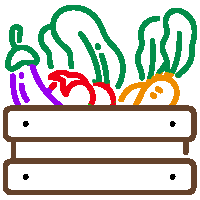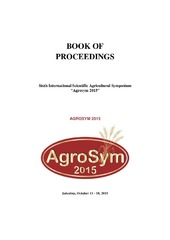Приказ основних података о документу
Influence of organic and conventional methods of growing on qualitative properties of soybean
| dc.creator | Dozet, Gordana | |
| dc.creator | Đukić, Vojin | |
| dc.creator | Cvijanović, Marija | |
| dc.creator | Đurić, Nenad | |
| dc.creator | Kostadinović, Ljiljana | |
| dc.creator | Jakšić, Snežana | |
| dc.creator | Cvijanović, Gorica | |
| dc.date.accessioned | 2021-08-12T09:11:48Z | |
| dc.date.available | 2021-08-12T09:11:48Z | |
| dc.date.issued | 2015 | |
| dc.identifier.isbn | 978-99976-632-2-1 | |
| dc.identifier.uri | http://RIVeC.institut-palanka.rs/handle/123456789/330 | |
| dc.description.abstract | Two-year survey was conducted according to the principles of organic and conventional dryland cropping technologies. Experiment was placed in Backa Topola, on calcareous chernozem with wheat as preceding crop. In ecological production basic soil fertilization was performed with 15 t∙ha-1 cowshed manure, and in conventional production as pre-sowing treatment was applied 100 kg N∙ha-1. In both years were similar weather conditions. Examination factors were production ways and application of microbial fertilizer. Microbial fertilizer was in liquid state and it contained various types of microorganisms. Microbiological fertilizer used in both varieties of production of sample plots in five variations: 1-control (with out specific microbiological fertilizer), 2-treat fields seven days before planting, 3-during phenological stage 1-3 leaves, 4-first flovering, 5- lots of flovering. Data were processed by two-factorial split-plot experiment variance analysis method, and differences between treatments were analyzed by LSD-test. Correlation analysis was conducted. The aim of this work was to determine protein content and oil of organic and conventional cropping technologies and correlational dependency between surveyed characteristics. Average content of protein is 39.93% in 2012 was above that figure. Analyis effected plant breeding didn’t recognised regularity of examined traits. Effect of application of microbiological fertilizer on protein and oil was very significant. Average oil content was higher in the organic and by 2.32% in comparison to the conventional production. Ecological soybean production, as production system with respect of environmental principles and standards, as well as specific local agroecological conditions, has its priority. | sr |
| dc.language.iso | en | sr |
| dc.publisher | Istočno Sarajevo : Poljoprivredni fakultet | sr |
| dc.relation | info:eu-repo/grantAgreement/MESTD/Integrated and Interdisciplinary Research (IIR or III)/46006/RS// | sr |
| dc.relation | info:eu-repo/grantAgreement/MESTD/Technological Development (TD or TR)/31031/RS// | sr |
| dc.rights | openAccess | sr |
| dc.source | Book of proceedings Sixth International Scientific Agricultural Symposium "Agrosym 2015", Jahorina, October 15 - 18, 2015 | sr |
| dc.subject | conventional and organic production | sr |
| dc.subject | protein and oil content | sr |
| dc.subject | microbial fertilizers | sr |
| dc.subject | soybean | sr |
| dc.title | Influence of organic and conventional methods of growing on qualitative properties of soybean | sr |
| dc.type | conferenceObject | sr |
| dc.rights.license | ARR | sr |
| dc.citation.epage | 412 | |
| dc.citation.spage | 407 | |
| dc.identifier.fulltext | http://RIVeC.institut-palanka.rs/bitstream/id/785/bitstream_785.pdf | |
| dc.identifier.rcub | https://hdl.handle.net/21.15107/rcub_rivec_330 | |
| dc.type.version | publishedVersion | sr |


